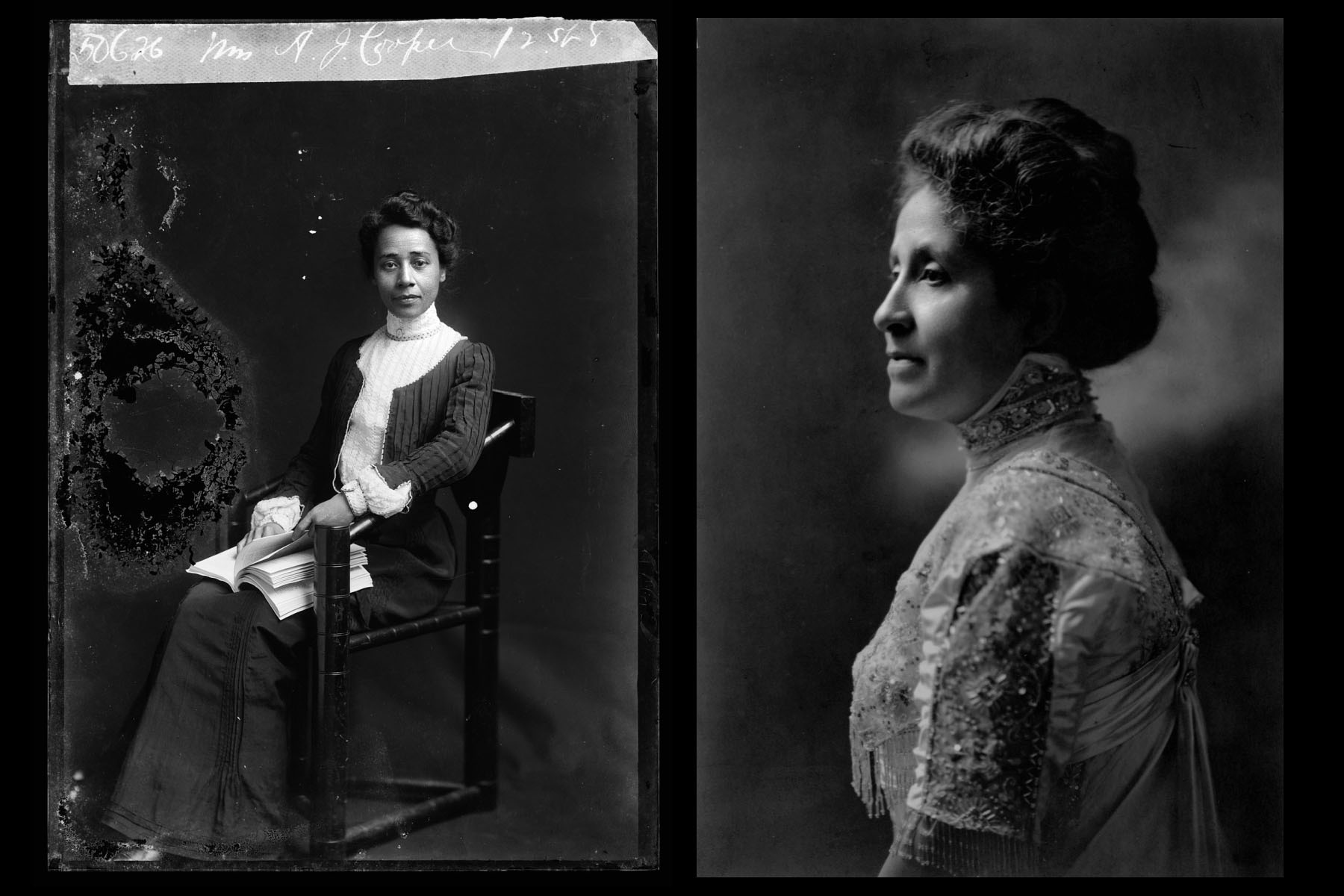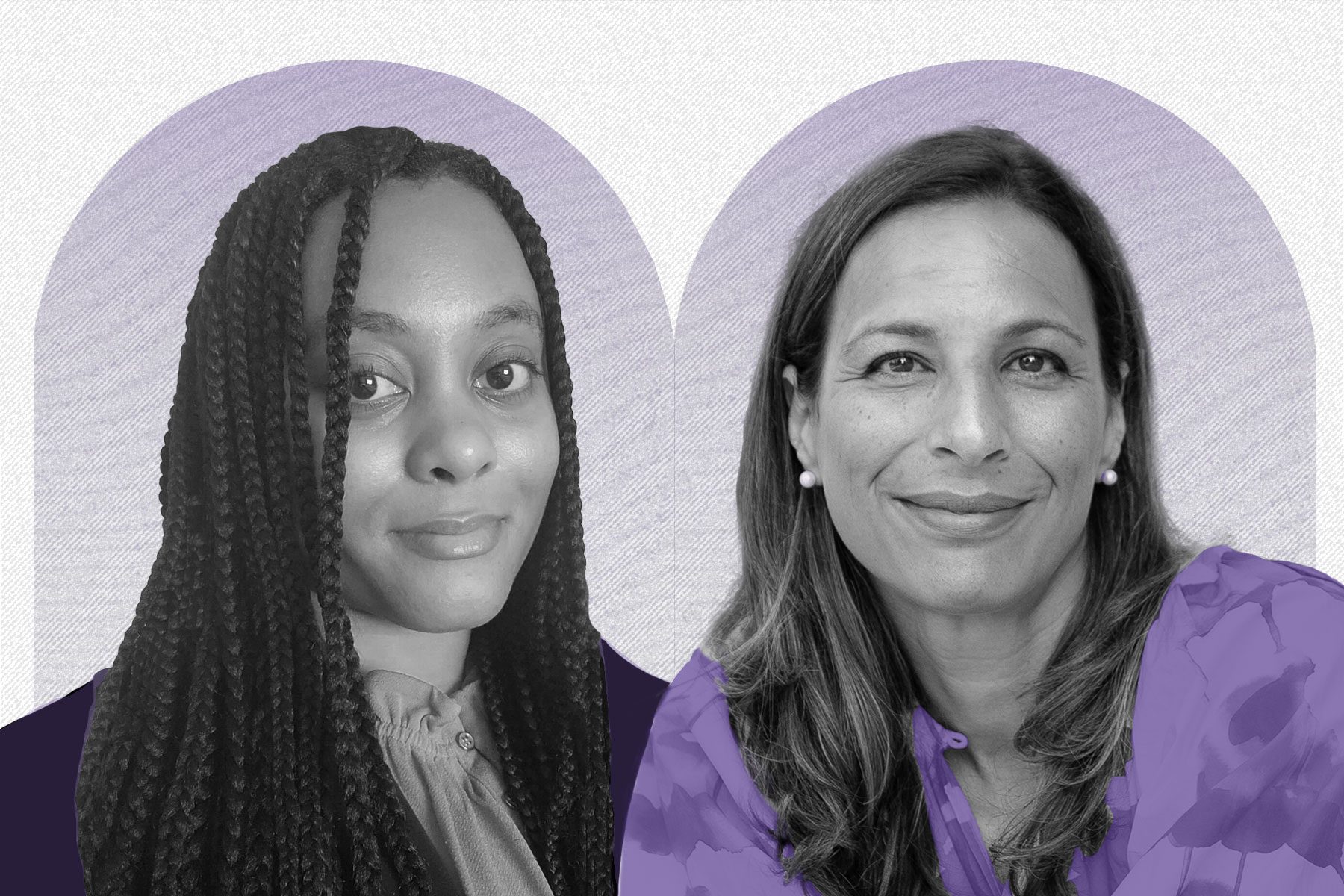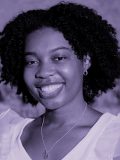For Women’s History Month, we’re letting women tell their stories in their own words through thoughtful conversations. Subscribe to our daily newsletter.
While White women had their eyes set on the ballot — what would ultimately be a self-serving prize — Black women in the late 19th and early 20th centuries led a multifaceted movement that would benefit not only themselves, but American society as a whole.
“Our women’s movement is woman’s movement in that it is led and directed by women for the good of women and men, for the benefit of all humanity, which is more than any one branch or section of it,” Josephine St. Pierre Ruffin said at the The First National Conference of Colored Women of America, held in Boston in 1895. A leader in the movement, she had called for a convention in The Woman’s Era, a newspaper she founded and published for Black women.
Black women’s clubs in the late 19th and early 20th centuries convened and advocated for causes such as suffrage and education. Their work, much of it documented in The Woman’s Era, laid the groundwork for public kindergarten, which the nation’s education system still uses as a model today.
They were led by women like Mary Ann Shadd Cary, who was an abolitionist, lawyer and the first Black woman to publish a newspaper, The Provincial Freeman; Anna Julia Cooper, who was an educator, author and the fourth African-American woman to earn her doctorate; Mary Church Terrell, who was the founding president of the National Association for Colored Women (NACW) in 1896 and a charter member of the NAACP; and Frances Ellen Watkins Harper, who was a writer, lecturer and helped to found the NACW.
Not even a generation removed from slavery and all too familiar with disenfranchisement, these four women led long lives of advocacy that spanned from the antebellum period to the civil rights movement of the 1960s. Each of their work is represented in the Black Women’s Organizing Archive, hosted at Pennsylvania State University’s Center for Black Digital Research. Part of the archive’s work is bringing together the pieces of these women’s legacies — through writings, speeches and correspondences — that are scattered across multiple locations, often buried in their male counterparts’ papers or hidden behind their husbands’ names.
Ahead of International Women’s Day, The 19th spoke with Shirley Moody-Turner, the project director for the Black Women’s Organizing Archive, and Sabrina Evans, one of the project’s coordinators, about the legacy this group of women were a part of.
This interview has been edited for length and clarity.
Daja E. Henry: This work focuses on the women of the late 19th and early 20th centuries. Let’s set the stage: What were they writing about and what were they up against?
Sabrina Evans: Particularly coming up into the late 19th century, we see Black women seeing the necessity of coming together themselves. And so in this period, we have the early women’s rights movement and Black women finding issue with not having both race and gender addressed in that space, and in a lot of ways feeling like it was pretty much like a White women’s movement. They weren’t represented, they weren’t able to be in positions of leadership or even to speak before a lot of the meetings and conventions that the women’s rights movement was creating.
-
More from The 19th
- 58 years after marching on Bloody Sunday, JoAnne Bland teaches her own Black history in Selma
- Barbara Johns made civil rights history at 16. Her sister reflects on the US Capitol statue planned in her honor.
- Mainstream education often neglects Black history. TikTok, Freedom Schools and other resources are bridging the gap.
And then on the other side of things we have Black organizations, predominantly male leadership with the same issue of not having their perspectives viewed. And so they felt the need to kind of come together collectively.
Then comes Josephine St. Pierre Ruffin’s call in 1894 for women to confer and to really speak towards the way that they’re being disrespected in the White mainstream press, but also in these spaces, and saying that we need to have a space to prioritize the things that we want to prioritize, and to really bring Black women’s perspectives to the forefront of organizing, particularly when we think about issues such as lynching becoming more predominant that were a lot of times very Black male focused. This is also a period where Jim Crow segregation is becoming increasingly concretized.
Shirley Moody-Turner: It’s a really critical moment. The late 19th century sees the pullback from Reconstruction. So this is the moment where you really have these rollbacks of Black political rights. And so it creates a space for Black women to step into the forefront because they didn’t have the same access to political rights as Black men did through Reconstruction.
You see them moving unapologetically to the forefront through what I see as a three-prong approach of addressing public opinion. They knew they had to shift public opinion in the way people were thinking about Black women, through local grassroots efforts by attending to the needs of their communities that weren’t going to be addressed in other institutional spaces and organizing a national voice.

What types of issues were the women’s clubs addressing?
Moody-Turner: The clubs were so diverse, operating across the entire country. Each one had different priorities based on the needs of the local communities. You saw them taking on issues of racial violence. Anti-lynching legislation was really critical. Addressing issues of segregation was really critical.
At the national level, they were advocating for universal suffrage. Education was really fundamental. In the Washington clubs, you have Anna Evans Murray advocate for the first public kindergartens. What they do in Washington, D.C., to get that done becomes a model for our national public kindergarten system. So what they were doing at the local level could often impact and become a model for what could be done across the nation. Job training, wage equity, Black women’s health, issues that we still fight for today locally that may not be seen as important in the mainstream conversation.
Of the four women whose archives you are preserving, I noticed a throughline is that they were all educators. How did that play a role in their organizing?
Moody-Turner: They were charting a path to Black higher education that was still very new. So we may think that this is well established, but Anna Julia Cooper was the fourth Black woman to earn her Ph.D. in 1925, which means only three people had done that.
Moving into higher education and liberal arts and classical education was new, but faith in education and literacy as this foundation of social change, as this mode of freedom, is longstanding in Black tradition. They were tapping into that, but then also kind of charting this new path.
I think they saw education as part of a multi-prong approach to freedom and to justice. They were educators, but they were also newspaper editors, and poets, and activists and administrators. They were always doing this very complex, intertwined work that looked at all the different ways they needed to operate in order to move toward their goals.
Evans: What they were trying to do as writers and with literature is very much connected to both their activism and education as well. This is a period when mainstream literature was trying to look back at slavery and think about it in very nostalgic terms, saying that enslaved people were content and happy in this position. When we look at their poetry and the short stories they write in their papers, we see that they’re very intentional about representations of Black people, specifically Black women, and countering those histories. Their literature becomes very functional as a way to teach their history and teach their different forms of resistance and not allow for negative stereotypes about Black women and men to continue to circulate.

The archive’s description mentions bringing together these women’s scattered works. Why are they scattered?
Evans: It oftentimes aligns with the women’s mobility, where they were located, where they were teaching, where they went to school. Bringing them together, it’s recognizing the spaces in which they were traveling and also where they were organizing.
Moody-Turner: A lot of times, there are gender dynamics that influence whose papers get preserved. What kind of institutional support there is for documenting and housing papers, and even just the ideology of whose work is important, and whose hands it will be in influence what kinds of records get saved and preserved. Oftentimes you find papers in the archives of their male peers. We’re looking at Cooper’s writings in W.E.B. Du Bois’ papers, because his papers have been well preserved, archived and digitized. We’re looking at how they show up across different figures’ archives. Some of our work is to bring those together.
It’s also about how we read and see the papers. Sometimes we don’t know how to recognize how they show up in archives. In some of the papers, women won’t be named. They’d be the “wife of,” or Mrs. So and So. It’s really been an effort of trying to both address that kind of systemic issue around whose work is preserved and then also to provide new ways of reading and seeing the archives that we can recognize the ways in which they show up.
The theme of this year’s Women’s History Month is “celebrating women who tell our stories.” What stories are these women telling through their work?
Moody-Turner: They’re telling a multifaceted story that is, on one hand, about the particular legacies of slavery and injustice and how that impacts Black women, specifically, but the country as a whole, as well. And I think the story they’re telling is how their insights and perspectives can change the way we think about what this project of American democracy is supposed to be. They can provide a perspective on this project of American democracy that has been so often silenced or left out or erased or buried. And if you listen, we can have some ways forward. I can push us to continue to try to realize that project.
Evans: I think they tell the story of the long history of Black women organizing, not just in this period. So when we look at Frances Harper or Mary Ann Shadd Cary, they’re both very much bridges between early Black rights activism happening prior to emancipation and afterwards, and then bridging it into this growing Black women’s club movement that’s happening at the end of the 19th century, and recognizing their Black feminist foremothers. Even going back to someone like Charlotte Forten Grimké. We’re seeing that genealogy of Black women’s thought and organizing that has always been there.
Even as we think in this period of folks like Mary Church Terrell, Anna Julia Cooper, Frances Harper and Ida B. Wells, recognizing who’s also the next generation, like Alice Dunbar Nelson and the women that continued to do this work into the civil rights movement.
The National Association of Colored Women that was created in 1896, that all of these women were part of, still exists today.






